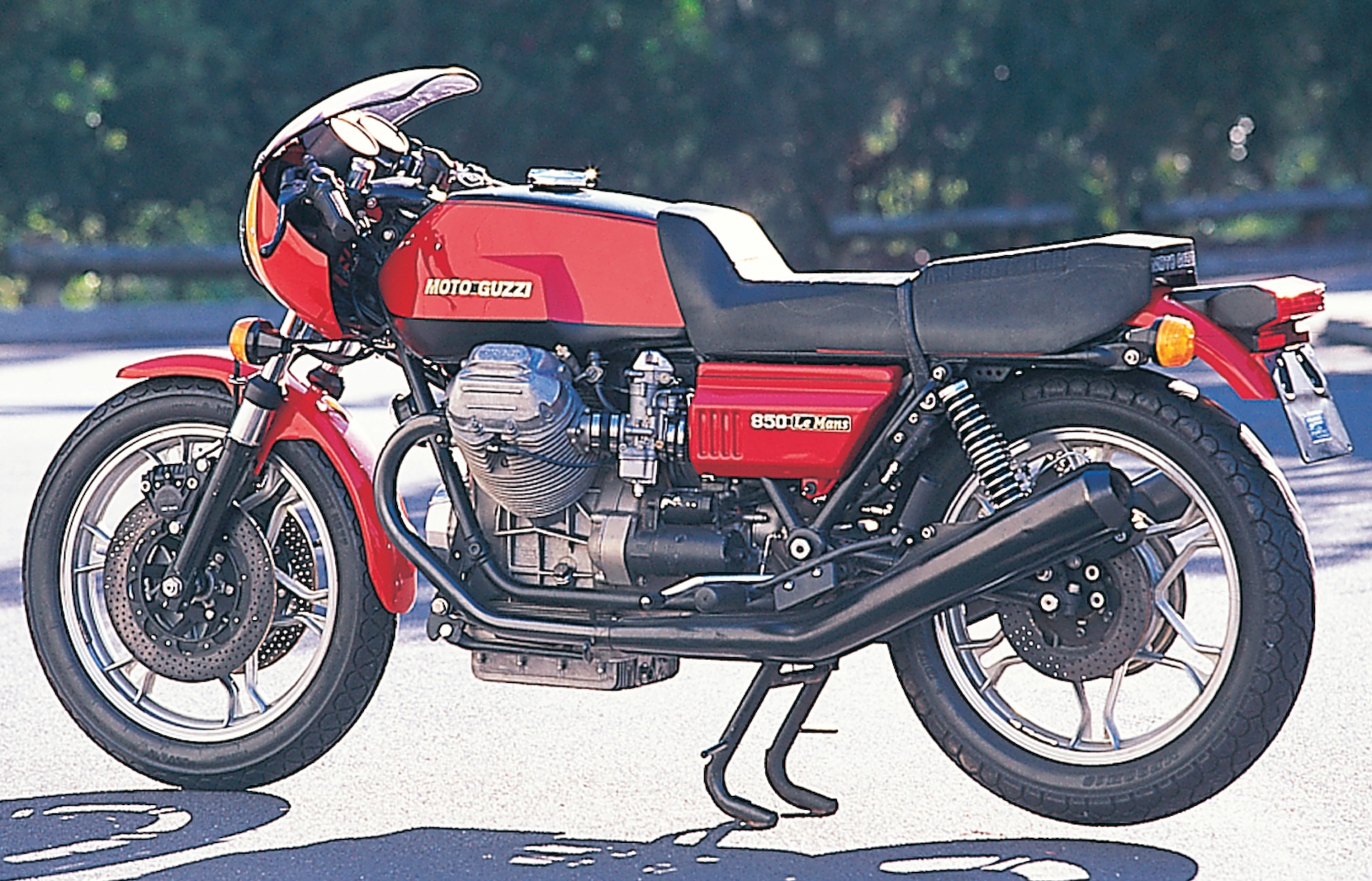Motorcycle Investor mag
Subscribe to our free email news
Moto Guzzi Le Mans 850
(by Ian Falloon, Feb 2022)

Good looks and performance to match. Meet the 850 Le
Mans
The mid-1970s was a halcyon
time for the Italian motorcycle industry with all the
major manufacturers producing class-leading sporting
machines. Determined not to be outdone by Ducati,
Laverda, and MV Agusta, in 1975 Moto Guzzi released
their spectacular 850 Le Mans.
Although derived from the
existing 750 S and 750 S3 the Le Mans was faster and
more stylish. With its cast alloy wheels, seat partly
covering the fuel tank and small fairing with orange
“Day-Glo” front section the Le Mans established a new
order emphasising style over function.
For the 850 Le Mans Moto
Guzzi’s brilliant engineer Lino Tonti lengthened the
stroke of the V7 Sport 750cc engine to 78mm and with
83mm pistons the displacement was 844cc. Most of the
performance boost over the 750 S3 came from the cylinder
head, with larger valves, higher (10.2:1) compression
ratio, and a pair of Dell’Orto 36mm carburettors
breathing through velocity stacks.
The high domed pistons
increased performance, but cylinder flame propagation
was inferior and the Le Mans engine was prone to
detonation and running hot. To improve throttle response
the Le Mans also had a thinner and lighter flywheel.
Another update was to the
exhaust system. Painted matt black to complement the
rest of the styling, this featured single-walled 40 mm
header pipes, with a balance pipe across the front of
the engine. Although quiet and efficient, the main
problem with the exhaust system was the black paint
wasn’t very durable and rusted prematurely.
The claimed power for the
Le Mans was 80 horsepower at 7300 rpm, but this was an
optimistic claim.
Like the engine, the 850 Le
Mans chassis was also quite similar to the 750 S3. The
35mm cartridge front fork included thinner walled tubes
and the light alloy Borrani rims made way for cast alloy
FPS wheels, still with the same WM3 rim sizes (2.15x18
inch).
The Le Mans also featured
the integrated braking system of the 750 S3 with Brembo
08 calipers, two drilled 300mm front discs and a 242mm
rear disc. These brakes were extremely effective, and
certainly amongst the best available in 1975. Although
the 198kg dry weight was considerable for a sporting
motorcycle, and the 1470mm wheelbase moderate, the Le
Mans was densely packaged and extremely compact.
But the raison d'être for
the Le Mans was really about style more than
performance. During the mid-1970s many European
manufacturers saw the factory café racer as a way of
countering the threat of cheaper, faster and continually
improving Japanese motorcycles.
BMW started the trend with
their ground-breaking R90S at the end of 1973, Norton
followed with the John Player 850 of 1974, and in 1976
Ducati decided to put their limited edition 900 Super
Sport into regular production. But none of these were as
successful stylistic creations as the Le Mans. The Le
Mans may have suffered from marginal execution and
indifferent quality, but more than any other motorcycle
epitomizes the mid to late 1970s café racer style. And
unlike some other deliberately styled motorcycles the Le
Mans has stood the test of time.
The Le Mans was the right
bike at the right time, offering similar performance to
the Ducati 900 SS and Laverda 1000 3C, in a more
civilised package. Tonti’s magnificent frame was still
more than up to the task of harnessing the power of the
90-degree V-twin and the Le Mans remained one of the
best handling motorcycles available. With the excellent
integral Brembo braking system it was hard to find a
better balanced all round sporting motorcycle and the
inclusion of an electric start and shaft final drive
made it easy to live with.
The Le Mans was a
class-leading machine, and it had the looks to match.
One of the great sporting motorcycles of the mid to late
1970s, the Le Mans was a masterpiece.
See the
original 1978 road test from Two Wheels
magazine.
-------------------------------------------------
Produced by AllMoto abn 61 400 694 722
Privacy: we do not collect cookies or any other data.

Archives
Contact





